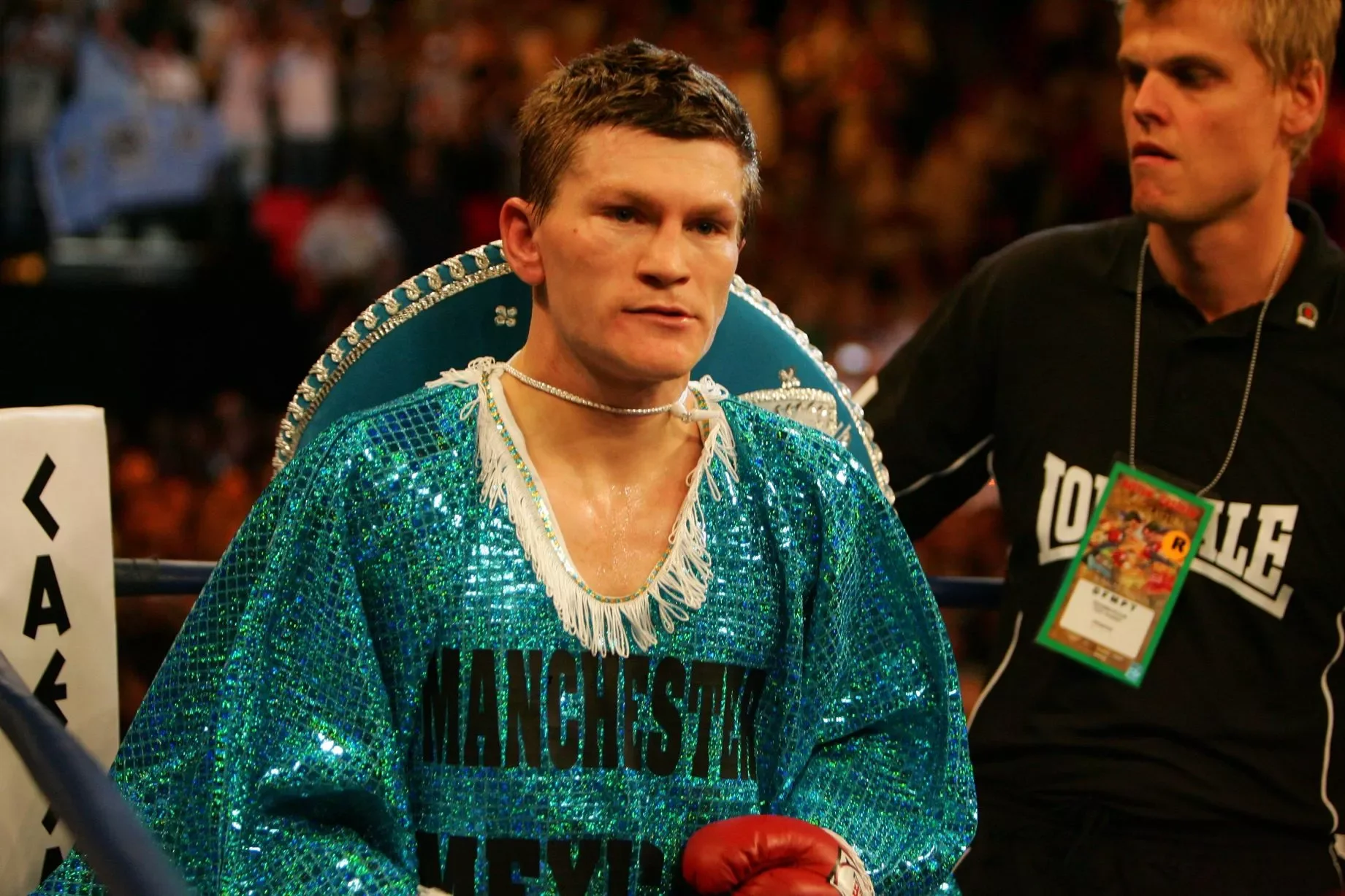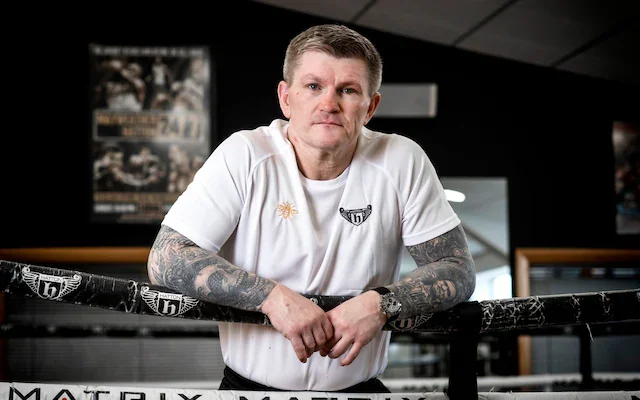
Ricky “The Hitman” Hatton: The People’s Champion.
A New Documentary Written & Presented by Matthew Walker
Ricky “The Hitman” Hatton: The People’s Champion -
A Documentary by Matthew Walker
“Ricky ‘The Hitman’ Hatton: The People’s Champion” is the latest long-form documentary written and presented by Matthew Walker, and stands as one of the most powerful and emotionally charged films in his body of work. This feature-length documentary explores the life, legacy and humanity of one of Britain’s most iconic sporting figures: Ricky Hatton. From his early days as a young fighter in Manchester, through his meteoric rise to world championship glory, to his battles outside the ring with mental health, the film captures the complete story of a man whose impact extends far beyond boxing.
This documentary is the centrepiece of Matthew’s growing catalogue of character-driven films, offering viewers an honest, uncompromising and deeply human portrait of a fighter who became the ultimate people’s champion.
A Documentary That Goes Beyond Boxing
“Ricky ‘The Hitman’ Hatton: The People’s Champion” is more than a chronological retelling of a boxing career. It is a reflective, deeply personal journey into the heart of a man who lived his life in front of millions, yet remained grounded in his working-class Manchester roots. Matthew Walker guides the audience through Hatton’s story with a combination of striking visuals, intimate voiceover, emotional depth, and an unmistakable respect for the legacy of the Hitman.
Through rare footage, evocative storytelling, and thoughtful narration, the documentary explores:
Hatton’s early life in Stockport and the Hattersley estate
The origins of “The Hitman” nickname and his childhood rise through amateur boxing
His dominant years as IBF, WBA and The Ring Light-Welterweight Champion, and WBA Welterweight Champion
The legendary Kostya Tszyu fight that catapulted him to global stardom
His iconic fanbase, responsible for turning Las Vegas into “Manchester-on-tour”
The emotional weight of the Mayweather and Pacquiao defeats
His battle with depression, told with honesty and sensitivity
His 2012 comeback, fuelled by the fans who always stood beside him
His Hall of Fame induction, marking his permanent place in sporting history
Matthew’s approach ensures this is not just a boxing film - it is a tribute to resilience, identity, community, and the importance of staying true to where you come from.
A Tribute to a British Icon
Ricky Hatton is one of the most beloved figures in British sporting history, known not only for his achievements but for his humility, humour and authenticity. Matthew’s documentary celebrates these defining qualities. From Hatton’s love for Manchester City to his famous breakfasts at The Butty Box café, from driving around Hyde in an Only Fools and Horses three-wheeler to walking into the ring in a giant “Fatman” suit, the film highlights what made Hatton a true man of the people.
Through every chapter of Hatton’s career — the triumphs, the tragedies, the laughter and the pain — the documentary reinforces the simple truth that made the Hitman so special: Ricky Hatton was always one of us.
Part of a Growing Collection of Matthew Walker Documentaries
“Ricky ‘The Hitman’ Hatton: The People’s Champion” joins an expanding portfolio of films written and presented by Matthew, each one focusing on remarkable individuals, cultural moments, and British heritage. His other documentaries include:
The Story of Goodison Park: The Grand Old Lady
A tribute to Everton FC’s historic home, its heritage, and the supporters who turned it into one of football’s most legendary grounds.
Murray Walker: The Voice of Formula 1
A heartfelt celebration of the commentator who shaped generations of motorsport fans.
Triumph Spitfire: The Car Designed In Secret
A story of British engineering, innovation and resilience behind one of the most iconic roadsters of its era.
Each documentary combines research, storytelling and emotional resonance — and visitors are encouraged to explore the full catalogue on Matthew’s website and YouTube channel.
About Writer & Presenter Matthew Walker
Matthew Walker is a TV presenter, documentary filmmaker, live event host and conference presenter whose work has featured on major global platforms including BBC, ITV, Channel 4, Formula 1, and Amazon Prime Video. His career spans broadcasting, live event hosting, content production and high-profile corporate presenting, making him one of the most versatile and in-demand presenters working in the UK today.
In addition to documentary storytelling, Matthew hosts conferences, awards ceremonies, panel discussions, sports events and corporate shows across the UK and internationally. Known for his clarity, professionalism, energy and strong on-screen presence, he brings confidence and polish to every project.
You can see more of his work on:
YouTube: @matthewwalker-tv
Instagram: @matthewwalkertv
Website: www.matthewwalker.tv
Watch ‘HITMAN’ the Documentary
The full film is available to watch on Matthew Walker’s YouTube channel:
Viewers are encouraged to subscribe, explore the full documentary collection, and stay updated on future releases.

Contact TV Presenter & Live Event Host
Matthew Walker.
Work With Matthew Walker
Beyond documentary filmmaking, Matthew is available for a range of professional presenting services:
Experienced in studio, location and live broadcast formats for major networks.
Hosting award ceremonies, charity events, festivals, sports events and corporate stages with confidence and energy.
Conference Moderator & Facilitator
Guiding panels, Q&A sessions, keynote introductions and multi-speaker summits with clarity and authority.
Content & Documentary Presenter
Available for branded content, factual programming, digital campaigns, and long-form documentary productions.
Contact
For bookings, enquiries or collaborations, please use the official contact details:












